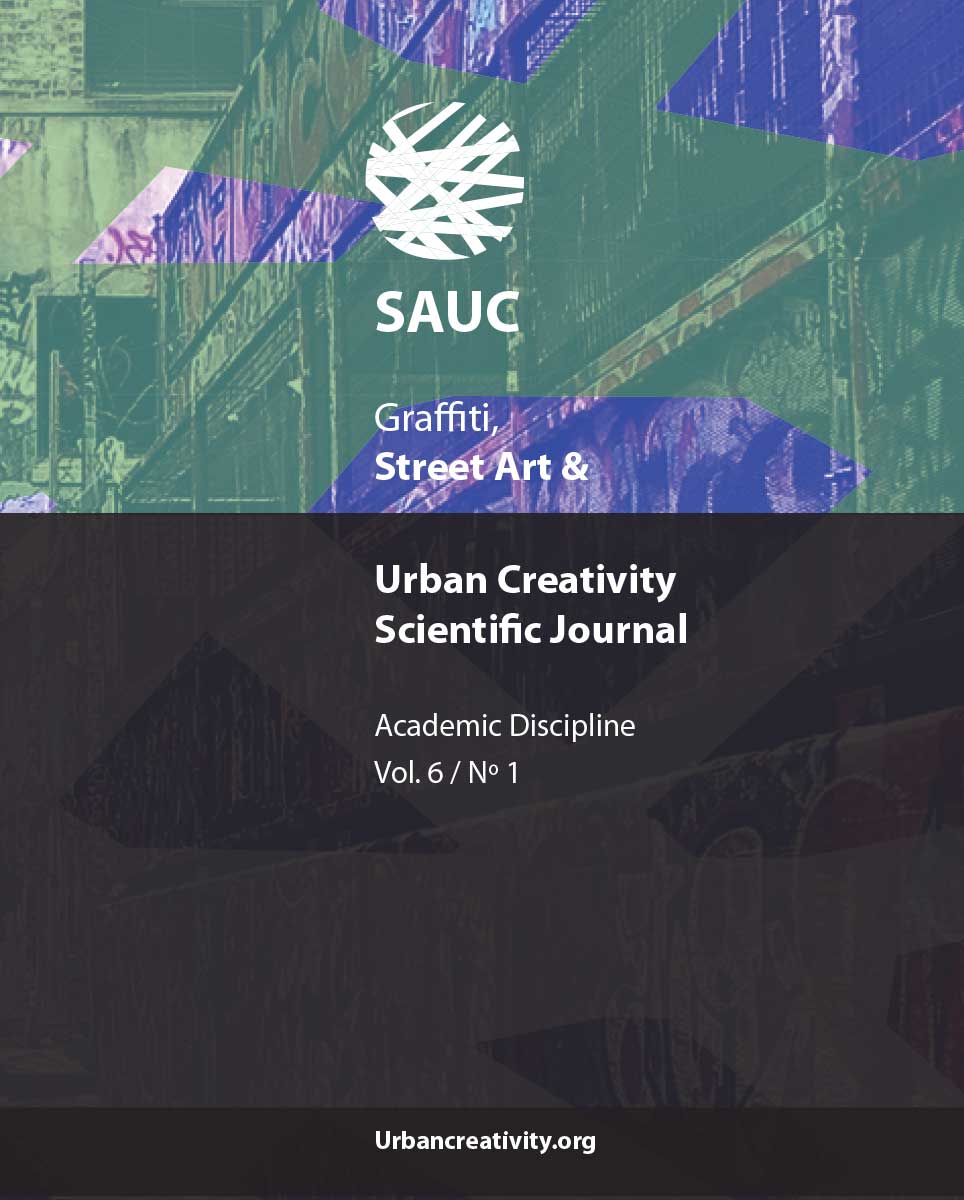Development of mural art (street art) after the last war in Kosovo
DOI:
https://doi.org/10.25765/sauc.v6i1.281Keywords:
Public Art, Line, Form, Colour, Mural, Grafitti, The ArtAbstract
This paper presents the development of graffiti art after the last war in Kosovo. From 2000 to 2020. The presented murals express emotions, contain satirical nuances, humor, ridicule of various political figures in the state of Kosovo. Except that the ugly spaces are decorated,through this art , artists have used it as a voice of revolt and disappointment by playing with humor to fix the current system. The colour of the graffiti have been analyzed with The content, the messages it contains , the forms and many other details..
Downloads
Global Statistics ℹ️
|
156
Views
|
86
Downloads
|
|
242
Total
|
|
Downloads
Published
How to Cite
Issue
Section
License
Those authors who publish in this journal accept the following terms:
-
Authors retain copyright.
-
Authors transfer to the journal the right of first publication. The journal also owns the publishing rights.
-
All published contents are governed by an Attribution-NoDerivatives 4.0 International License.
Access the informative version and legal text of the license. By virtue of this, third parties are allowed to use what is published as long as they mention the authorship of the work and the first publication in this journal. If you transform the material, you may not distribute the modified work. -
Authors may make other independent and additional contractual arrangements for non-exclusive distribution of the version of the article published in this journal (e.g., inclusion in an institutional repository or publication in a book) as long as they clearly indicate that the work was first published in this journal.
- Authors are allowed and recommended to publish their work on the Internet (for example on institutional and personal websites), following the publication of, and referencing the journal, as this could lead to constructive exchanges and a more extensive and quick circulation of published works (see The Effect of Open Access).













